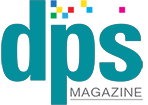Current Articles 371
A Quick Beat on Post Press
Post-press solutions are integral to the digital printing process. Varying configurations, including unwinders/rewinders, gluers/folders, inserters, binders, trimmers, and slitters are routinely required on the production floor—whether placed inline, near line, or offline. Trends in inkjet from personalization to achieving higher volumes are major influences on the newest generation of post-print equipment.
A Logical Choice
Clothing manufacturers in the t-shirt space look to direct to garment (DTG) printers as a means to decorate products.
The Right Cut
Evolving customer demands favor digital production. To remain productive, profitable, and keep customers coming back, finishing must keep up...
Specialty Cuts
Part one of two Finishing is a core component of any print environment. For those that want to go beyond straight cuts, die cutters are an option...
Package Production Efficiency
Packaging applications represent a steady business for capable print providers. However, like other segments of print, customer demands are evolving. For many, this means more frequent, shorter and complex runs. While the equipment is able to handle this type of work, it can become inefficient and expensive to produce without proper workflow.
Broadened Horizons
Production inkjet breaks barriers in terms of impressions per minute (ipm) and maximum monthly output. These devices continue to move closer to the speed and price of traditional offset. However, it’s improved print quality, uptime, and color gamut that attract new users.
All Jazzed Up
Print enhancements and embellishments alter the look of a printed piece, sometimes adding a tactile effect. Depending on the desired finish, these effects stand out from the pack and can even elicit an emotional response from the recipient or viewer.
Critical Cutting Equipment
Cutting is an important function for any print environment. The versatility and volume requirements of each specific business helps narrow down the options.
Meeting New Demands
Print service providers (PSPs) are an essential aspect of every community. As businesses adapt to new needs brought on by the COVID-19 pandemic, they rely on printed communications to share updated processes and feature new products or services.
Strength in Flexibility
Many organizations choose to implement a mixed communication strategy that incorporates both digital and physical components. Creating and delivering these offerings in a flexible and secure manner is a complex process.
Accurate Simulation
Automation software is a broad term. The goal is to eliminate manual processes and increase efficiencies for whomever the user is. For packaging manufacturers, software is helpful to enlist at many parts...
Speeds & Feeds
Cutsheet inkjet systems continue to advance in terms of speeds, feeds, and image quality to attract new users...
Channel Access
News
04.21.2025 Roland DGA Corporation, a leading provider of large format...
04.21.2025 Amplify is where print and packaging designers, commercial ...
04.17.2025 Roland DG Corporation, a leading manufacturer of wide-format ...
04.16.2025 Canon U.S.A., Inc., a leader in digital imaging solutions...
04.16.2025 General Formulations, a leading global manufacturer of pressure-sensitive...
Web Exclusive
Print a automation is essential to profitability and productivity...
Digitally printed labels make up a small, but growing segment of the overall market...
Magnetic signage is useful for promotional reasons, but it’s also fun to work with the medium as a design aesthetic.
Web to print (W2P) bring many advantages to a variety of print environments. Depending on the focus of the provider, certain features and functions are more essential.
Web to print (W2P) tools help expand a print provider’s reach outside of the local area, improve productivity of standard products, and improve client relationships.



